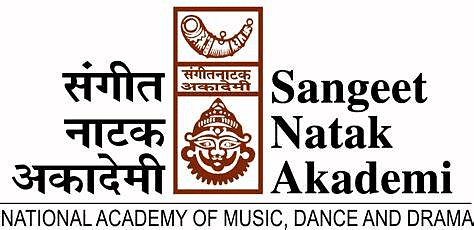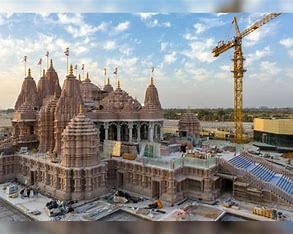UPSC Daily Current Affairs- 12th February 2024 | Current Affairs & Hindu Analysis: Daily, Weekly & Monthly PDF Download
GS-I
Sangeet Natak Akademi
Subject: Art and Culture

Why in News?
Former Vice-president of India and Union Minister for Culture, Tourism and Development of the Northeast Region will be inaugurating the Sangeet Natak Akademi’s ‘Dakshin Bharat Sanskritik Kendra’ in Hyderabad.
About Sangeet Natak Akademi:
- It is India’s national academy of music, dance and drama.
- It was created by a resolution of the Ministry of Education, with P.V. Rajamannar as its first Chairman.
- It was set up in 1953 for the preservation and promotion of the vast intangible heritage of India’s diverse culture expressed in forms of music, dance and drama.
- Presently, it is an Autonomous Body of the Ministry of Culture.
- The Chairman of the Akademi is appointed by the President of India for a term of five years.
- It is fully funded by the Government for the implementation of its schemes and programmes.
- Aims and objectives:
- To coordinate the activities of regional or State Academies of dance, drama and music;
- To promote research in the fields of Indian dance, drama and music and for this purpose, to establish a library and museum, etc.;
- To co-operate with such similar academies as there may be and other institutions and associations for the furtherance of its objectives and for the enrichment of Indian culture as a whole;
- To encourage the exchange of ideas and enrichment of techniques between the different regions in regard to the arts of dance, drama and music;
- To encourage, where necessary, the establishment of theatre centres, on the basis of regional languages, and cooperation among different theatre centres;
- The Sangeet Natak Akademi Awards are the highest national recognition conferred on practising artists.
- The Akademi also confers Fellowships on eminent artists and scholars of music, dance and drama; and has in 2006 instituted annual awards to young artists – the Ustad Bismillah Khan Yuva Puraskar.
Source: The Hindu
Bochasanwasi Akshar Purushottam Swaminarayan Sanstha (BAPS)
Subject: Art and Culture

Why in News?
The Prime Minister will inaugurate the Bochasanwasi Akshar Purushottam Swaminarayan Sanstha BAPS Mandir, the first Hindu temple in Abu Dhabi.
About Bochasanwasi Akshar Purushottam Swaminarayan Sanstha (BAPS):
- BAPS is a socio-spiritual Hindu faith with its roots in the Vedas.
- It is based on the Vedic teachings propagated by Bhagwan Swaminarayan (1781-1830 CE).
- It was formally established in 1907 CE by Brahmaswarup Shastriji Maharaj.
- Founded on the pillars of practical spirituality, the BAPS reaches out far and wide to address spiritual, moral and social challenges and issues.
- No Alcohol, No Addictions, No Adultery, No Meat, No Impurity of body and mind are the five-lifetime vows of BAPS followers.
- Its global network of mandirs and centres hosts many moral, social, cultural, and spiritual activities.
- Education and women development are other focus areas, with many schools, hostels, and community development activities targeted at women being managed by BAPS.
- It is also engaged in a variety of humanitarian activities that include services in times of natural calamities, primary schools, students’ hostels, hospitals, diagnostic camps, anti-addiction drives, environment-awareness programs, tribal uplift, and literacy campaigns.
- BAPS is an NGO with a Consultative Status with the Economic and Social Council of the United Nations.
Source: DD News
GS-II
Nazool Land: Behind the Violence in Haldwani
Subject: Polity and Governance

Why in News?
Violence erupted in Uttarakhand’s Haldwani district after the administration conducted a demolition drive at the site allegedly on Nazool Land.
What is Nazool Land?
- Definition: Nazool land refers to government-owned land that is often leased out to entities for specific purposes, rather than being directly administered as state property.
- Lease Terms: Entities leasing Nazool land typically hold it for a fixed period, ranging from 15 to 99 years, with the option to renew the lease upon expiration.
Historical Context
- Origins: Nazool land emerged during British rule in India when lands confiscated from opposing kings and kingdoms were designated as state property.
- Post-Independence: After Independence, these lands were transferred to the respective state governments due to a lack of proper documentation to prove prior ownership by the former royal families.
Governance of Nazool Land
- Legal Framework: While various states have implemented government orders to regulate Nazool land, the Nazool Lands (Transfer) Rules, 1956, are frequently utilized for adjudication.
- Lease Renewal Process: The renewal or cancellation of leases for Nazool land is typically managed by the Revenue Department of the local development authority.
Utilization of Nazool Land
- Public Purposes: Nazool land is commonly used by the government for public infrastructure projects such as schools, hospitals, and Gram Panchayat buildings.
- Housing Societies: In urban areas, Nazool land is often leased out for housing societies and other residential developments.
Source: Indian Express
How Courts have been Granting Bail in UAPA cases?
Subject: Polity and Governance
Why in News?
The Supreme Court’s recent decision to deny bail to an accused in an alleged “Khalistan module,” highlights the stringent bail provisions under the Unlawful Activities Prevention Act (UAPA).
- Unlike ordinary criminal law, the UAPA imposes higher hurdles for granting bail, reflecting the gravity of offenses related to terrorism and unlawful activities.
About Unlawful Activities Prevention Act (UAPA)
| Description | |
| Purpose |
|
| Applicability |
|
| Origin |
|
| Key Provisions |
|
| 2004 Amendment |
|
| 2019 Amendment |
|
Bail Provisions in UAPA: Section 43D (5)
- Key Provision: Section 43D (5) of the UAPA stipulates that accused individuals charged under specific chapters of the Act shall not be granted bail unless certain conditions are met.
- Bail Criteria: The law places the burden on the accused to demonstrate to the court that the accusations against them are not prima facie true, shifting the onus from the prosecution to the defense.
Impact of Judicial Precedents
- Watali Judgment (2019): The Supreme Court’s ruling in Zahoor Ahmed Shah Watali v NIA established a precedent wherein bail decisions under the UAPA are based solely on accepting the prosecution’s case at face value.
- Limitations on Defense: Legal scholars argue that the Watali judgment restricts the defense’s ability to challenge the prosecution’s case effectively, undermining the principle of a fair trial.
Post-Watali Developments
- Court Discretion: Despite the stringent bail provisions, courts have granted bail in certain cases, emphasizing the need for specific, individual charges supported by credible evidence.
- Differing Judicial Interpretations: Subsequent judgments, such as in Union of India vs KA Najeeb (February 2021) and Vernon Gonsalves v State of Maharashtra (July 2023), have provided nuances to the bail criteria, recognizing the importance of balancing liberty with the right to a speedy trial.
Challenges and Future Implications
- Legal Ambiguity: Divergent interpretations by different benches highlight the need for clarity in UAPA bail provisions, with the potential for larger benches to resolve conflicting precedents.
- Case Analysis: The recent denial of bail to a Khalistani protagonist underscores the predominance of the Watali ruling in UAPA bail decisions, despite potential inconsistencies with other judgments.
Conclusion
- Balancing Rights: The debate over UAPA bail provisions reflects the delicate balance between safeguarding national security and protecting individual liberties.
- Legal Evolution: The evolution of judicial interpretations will shape the future landscape of UAPA bail jurisprudence, influencing the rights of accused individuals in cases involving national security concerns.
Source: The Quint
GS-III
Unified Payments Interface (UPI)
Subject: Economy

Why in News?
India's Unified Payment Interface (UPI) services will be rolled out in Sri Lanka and Mauritius at a virtual ceremony.
About Unified Payments Interface (UPI):
- The UPI is a digital and real-time payment system developed by the National Payments Corporation of India (NPCI) and regulated by the Reserve Bank of India (RBI).
- It was launched on April 11, 2016.
- It is designed to enable peer-to-peer inter-bank transfers through a single two-click factor authentication process.
- Features:
- Unlike traditional methods, UPI simplifies transfers using the recipient's UPI ID, be it a mobile number, QR code, or Virtual Payment Address, eliminating account numbers.
- It eliminates the need to enter bank details or other sensitive information each time a customer initiates a transaction.
- A consistent UPI transaction PIN across apps enhances cross-operability, enabling 24/7 transactions.
- UPI operates as a digital public infrastructure, allowing seamless interactions for all players, including merchants and customers, without transaction costs.
- UPI uses technologies like the Immediate Payment Service (IMPS) and the Aadhaar-Enabled Payment System (AEPS) to ensure that payments between accounts go smoothly.
- It facilitates push (pay) and pull (receive) transactions and even works for over-the-counter or barcode payments, as well as for multiple recurring payments such as utility bills, school fees, and other subscriptions.
- It also works with "Peer-to-Peer" requests, which can be scheduled and paid for based on need and convenience.
Source: Indian Express
Celebrating Darwin Day: Understanding Evolution
Subject: Science and Technology
Why in News?
February 12 is celebrated globally as Darwin Day to honor the birth of naturalist Charles Darwin and his contributions to evolutionary theory.
- Darwin’s seminal work, ‘On the Origin of Species by Means of Natural Selection,’ published in 1859, revolutionized our understanding of evolution.
Who was Charles Darwin (1809–1882)?
| Description | |
| Early Life |
|
| Education |
|
| Famous Work |
|
| Scientific Contributions |
|
| Research Expeditions |
|
| Death |
|
| Legacy |
|
Evolutionary Insights
- Contributions of Darwin and Wallace: Darwin and Alfred Russell Wallace independently proposed the theory of evolution by natural selection, sparking a paradigm shift in biology.
- Scientific Advancements: Darwin Day serves as an occasion to highlight recent scientific advancements in evolutionary biology and promote public engagement with science.
- Impact on Modern Biology: Darwin’s ideas continue to shape modern biology, providing a framework for understanding the diversity of life on Earth.
Key Propositions by Darwin
[A] Understanding Genetic Variations
- Role in Adaptation: Genetic diversity within populations facilitates adaptation to changing environments, as observed in the process of natural selection.
- Example: Genetic variants conferring heat tolerance in a population become advantageous in warmer climates, leading to their increased prevalence through natural selection.
- Mechanisms of Variation: Mutation, recombination, and gene flow contribute to the generation and maintenance of genetic diversity within populations.
[B] Mechanisms of Evolution
- Natural Selection: Darwin and Wallace’s theory of natural selection explains how advantageous traits become more common in populations over successive generations.
- Genetic Drift: Random fluctuations in allele frequencies, known as genetic drift, can lead to significant changes in small populations.
- Gene Flow: Migration and gene flow between populations can introduce new genetic variations and prevent genetic divergence.
Universal Principles of Evolution
- Biodiversity and Evolution: Evolutionary processes have shaped the rich biodiversity observed on Earth, spanning billions of years.
- Conservation Implications: Understanding evolution informs conservation efforts aimed at preserving species and ecosystems.
- Ecological Interactions: Evolutionary dynamics influence ecological interactions, including predator-prey relationships, competition, and mutualism.
Human Evolution and Genetic Diversity
- Human Origins: Humans share a common ancestry with other great apes and have undergone genetic divergence over millennia.
- Genetic Variation: Every individual carries unique genetic variations, contributing to the diversity within human populations.
- Cultural Evolution: Human societies have evolved culturally and genetically, contributing to the global pool of knowledge and skills.
Promoting Equality and Diversity
- Inclusive Society: Recognizing genetic diversity underscores the importance of equality and inclusion across all aspects of society.
- Cultural Diversity: Embracing cultural diversity enriches human experience and promotes mutual understanding and cooperation.
- Addressing Biases: Understanding the genetic basis of traits can help address biases and stereotypes related to race, ethnicity, and identity.
Challenges and Conservation
- Habitat Degradation: Human activities pose threats to biodiversity, necessitating conservation efforts to preserve genetic diversity.
- Climate Change: Rapid environmental changes, such as climate change, can impact the adaptive potential of species, highlighting the importance of evolutionary resilience.
- Community Engagement: Collaborative conservation efforts involving local communities and stakeholders are essential for biodiversity conservation and sustainable development.
Conclusion
- Continued Learning: Advancements in evolutionary biology deepen our understanding of life’s complexities and guide efforts towards a sustainable future.
- Celebrating Diversity: Embracing genetic, cultural, and ecological diversity enriches human experience and promotes harmony in a rapidly changing world.
Source: Indian Express
Understanding Brumation in Reptiles
Subject: Environment and Ecology

Why in News?
The mere mention of snakes is enough to send chills down the spine of a person. If any individual faces the bite of these serpents, it can turn out to be fatal for them. All snakes, however, are not venomous and thus do not cause any harm to someone with their bite. Therefore, we just need to identify which snakes are venomous and which are not and take the necessary steps according to them. According to a report published in Terminix, we need to observe four factors before deciding whether a snake is venomous or not. They are the behaviour and habitat of the snakes, colour, head and pupils.
What is Brumation?
- Definition: Brumation is a period of dormancy or slowed activity in reptiles, similar to hibernation in mammals. It occurs during colder months when temperatures drop and food becomes scarce.
- Purpose: Reptiles enter brumation to conserve energy and survive adverse environmental conditions.
- Habitat: They may retreat to underground burrows, rock crevices, or other sheltered areas where temperatures are stable.
- Metabolic Slowdown: During brumation, their metabolism significantly slows, allowing them to go weeks or months without eating.
- Reduced Activity: Reptiles minimize their resource requirements and conserve energy during this period of reduced activity.
Observations
- Species Affected: Researchers have observed brumation in various reptilian species across habitats.
- Examples: Box turtles and painted turtles burrow into the mud at the bottom of ponds or lakes. Snakes seek refuge in underground dens or caves, while lizards hide under rocks or within vegetation.
Significance of Brumation
- Survival Strategy: Brumation is crucial for reptiles to survive cold climates and endure challenging environmental conditions.
- Re-emergence: It allows reptiles to conserve energy until they can re-emerge to feed and reproduce in more favorable conditions.
Source: Frontiers
|
55 videos|5389 docs|1141 tests
|
FAQs on UPSC Daily Current Affairs- 12th February 2024 - Current Affairs & Hindu Analysis: Daily, Weekly & Monthly
| 1. What is the Sangeet Natak Akademi? |  |
| 2. What is the significance of Bochasanwasi Akshar Purushottam Swaminarayan Sanstha (BAPS)? |  |
| 3. How are courts granting bail in UAPA cases? |  |
| 4. What is the Unified Payments Interface (UPI)? |  |
| 5. What is brumation in reptiles and why is it important to understand? |  |





















